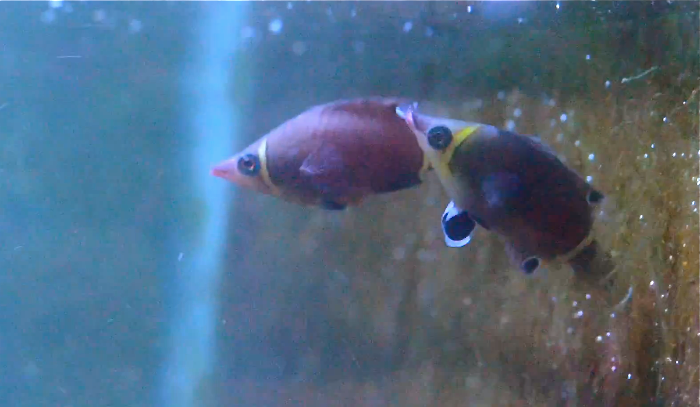For many reef enthusiasts, watching their inhabitants grow and mature in their mini reefs makes the hobby all the more rewarding and gratifying. Fish are more often than not, the essence of a living reef and is what brings life to an otherwise static coral tank. Keeping certain species as pairs, or in a small group adds another dimension of interaction that occurs between our pets that would otherwise go unnoticed in a lone individual. Courting, displaying, pair bonding interactions and of course spawning, are some interesting events that would otherwise elude an enthusiastic hobbyist should his fish be deprived of a mate.
Not all fish are suitable in pairs or groups, and that’s where research comes in of course. Some fish generally only pair up to spawn, and then go their separate ways once the deed has been done. As a general rule, Anthias and many species of fairy or flasher wrasses do well in pairs or small groups, often with a single male and multiple females. Certain butterflyfish, dwarf angels and gobies on the other hand, make for an exceptionally interesting couple once pair bonded, and many pair for life.
This pair of, if i may, cute looking Wetmorella nigropinnata in Josiah’s tank make for a wonderful exhibit in his reef. These otherwise shy and secretive wrasse belong to a small genus of three species known as Wetmorella, more affectionally known as the possum wrasses. This video shows Josiah’s pair of possum wrasses engaging in a spawning event. The obese looking and otherwise indistinguishable female is differentiated from the male by her swollen belly which is filled with eggs.
Certain wrasses, especially from the genus Cirrhilabrus, Paracheilinus and to a certain extent Anampses etc, start their spawning rituals with a male dashing around displaying heightened colors and fin flaring to attract a gravid female. The female if interested, leaves the group and spirals with the male a few meters off the substrate culminating in the release of gametes by both sexes. Wetmorella species do not engage in such acts of display, and spawn in a slower more graceful manner.
The male nudges the female with his snout and start to rise above the water column as they prepare their spawning ascend. This tank here may be too shallow, and the pair makes many false rises before the final successful one. As exciting as this may be to anyone who owns a pair of spawning pelagic fish, the rearing of the eggs and fry to adult is a difficult road. Although much advancement has been made in rearing demersal spawners, pelagic fish are still more challenging for the home aquarist. Nevertheless, being able to see your fish spawn or interact in the tank as if in the wild is a rewarding and enjoyable opportunity. We’d like to thank Josiah Phang from Singapore for the heads up on his pair of spawning wrasses.



